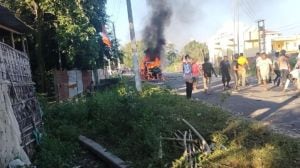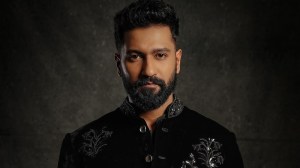Safety takes a backseat, radar proposal gathers dust
More than a year after 9/11, a proposal to monitor the entire Indian airspace with primary radars is gathering dust, even raising fears of m...

More than a year after 9/11, a proposal to monitor the entire Indian airspace with primary radars is gathering dust, even raising fears of many more Purulias in the days to come.
As of now, the Airports Authority of India (AAI) uses mostly secondary radars to monitor air traffic. Unlike primary radars, these radars can monitor an aircraft only if the transponder on board the flight is kept operational. On 9/11, the terrorists had switched off the transponders on board.
To counter such a situation, the Indian Air Force (IAF) proposed nearly two years ago that the AAI should use primary radars for airspace management. These, in turn, would be integrated with IAF radars.
This suggestion was later included in the Group of Ministers’ report on reforming the national security system, submitted in October 2001. The IAF contention was that primary radars do not need on-board transponders to monitor an aircraft.
Hence, these would be more useful for airspace security. It is learnt that over 30 radars with 200 nautical miles radius would have to be installed to monitor the entire Indian airspace. While 15 radars would be used just to cover the whole airspace, an equal number would be needed to check overlapping areas. This way, Civil Aviation Ministry sources say, every aircraft entering Indian airspace would be constantly monitored by at least two radars.
Subsequently, these were to be integrated with the existing IAF network of radars. The idea, according to officials, was to create a ‘‘master database’’ for both air defence and civil aviation purposes.
For security reasons, the IAF, however, suggested that they be in control of the data generated from the integration of these systems.
As of now, there are just two 200 nautical-mile radars — one in Delhi and the other at Mumbai — with the AAI.
It is understood that the remaining number of radars would cost over Rs 2,500 crores. The cost, sources say, is too much for the AAI to bear. With the International Civil Aviation Organisation (ICAO) recommending the use of secondary radars to control air traffic, the AAI sees no reason to go the extra mile.
Despite these objections, a pilot project of sorts was undertaken at Trivandrum by the AAI. New radars were never purchased but an attempt was made to integrate the IAF radars with the existing civil aviation facility there.
On being contacted, AAI Member (Operations) K. Ramalingam said, ‘‘Discussions on the subject are still on and we have been providing necessary inputs to different ministries on the subject. A final decision is still to be taken.’’
But it is now learnt that with the recommendations of the Khola Committee to post IAF officials alongside civil air traffic controllers at airports, the previous suggestions have been put on the back-burner.
While the IAF now refuses to comment on the subject, recommendations made by the then Assistant Chief of Air Operations, Air Vice Marshal S.K. Jain, were brought out in the GoM report in the following way: ‘‘Situation may not be so bad as long as all air traffic is legitimate, friendly and operated as per rules. But rules will be broken. A rogue aircraft may switch off its transponder or intentionally get down below the line of sight of the secondary surveillance radars. In this case, we will not have any pick-up on such an aircraft.’’



- 01
- 02
- 03
- 04
- 05



























